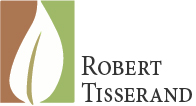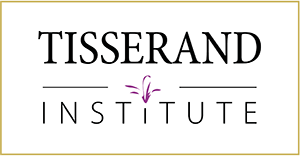Hello Mr. Tisserand,
I am curious about re-distilled peppermint.
Someone wrote me recently and said that there was no such thing as a re-distilled peppermint. I’d like to know if this is true.
Thank you!
Brittany
A few essential oils are ‘rectified’. Because this is also described as “re-distilled” it has given rise to the myth that many essential oils are distilled more than once – 1st, 2nd and 3rd grades, or distillations. But, once plant material has been distilled, it contains no essential oil – it is never re-distilled.
Rectification involves fractional distillation in order to remove unwanted constituents. The essential oil is put through a second process using a tall, narrow column. In the case of bitter almond oil, hydrocyanic acid (cyanide) is removed, as it is highly toxic. In peppermint, minor sulfur constituents are removed as they impart a slightly unpleasant taste, and most peppermint oils are used in food flavoring.
Two essential oils – camphor and ylang-ylang – undergo a separation process during distillation, so there are five grades of yang-ylang oil (extra, I, II, III and complete), and four colors of camphor oil (white, blue, yellow, brown)! But none of this involves re-distillation.
So yes, there is such a thing as re-distilled peppermint, but it’s the oil that’s re-processed, not the plant. Strictly speaking it is less natural, as something that was naturally there has been removed. In the case of bitter almond oil, no-one is complaining.
Regards,
Robert


Yet I have talked to actual distilleries about this and have been told that they do in fact re-distill plant material to create these 2nd, 3rd, 4th etc distillations. So who is right? I’ve also been told by Doterra main office that they sell ‘complete distillation peppermint oil’. Can you explain this?
Thanks
Who did you talk to Christi, and which plant material was re-distilled? The only essential oil with several grades is ylang-ylang. It is distilled for 18 hours – an unusually long time. Extra is the oil from the first hour of distillation, First is the next 3 hours, Second is the next 5 hours, and Third is the last 9 hours.
As for DoTerra’s claim to sell ‘complete distillation peppermint’ – no I can’t explain this, as it makes no sense. All peppermint oil is a complete distillation.
A bit off topic I know but Do Terra also use the term, “Therapeutic Grade” which they have I believe trademarked and has no legal meaning. I am not commenting on the quality of their oils, never having tried them but I don’t like the marketing methods they employ and calling their peppermint oil, “complete” sounds to me like more of the same.
So a company that states all their oils are 1st distillations — is this just another’s marketing term like therapeutic grade which the consumer assumes makes it better somehow?
This is an easy claim to make, as almost all essential oils are in fact first distillations – it’s just that there are (in most cases) no second or third distillations! With very few exceptions, this is purely marketing babble.
I think Christi, you are mistaking peppermint oil for ylang ylang complete essential oil. doTerra is probably telling you they use the “complete” version of ylang ylang. This means they use a blend of Extra, I, II, and III grades.
Hi Robert,
I am currently having both Young Living and doTERRA oils in use. I read the comments to note that there is marketing babble going on. How then can a layman (without access to high end scientific chemical tests) determine if the oils are adulterated or otherwise?
Hi Eve,
Most essential oils sold for aromatherapy use are pure and unadulterated. Two ways to check for purity are (1) to ask the company for a GC/MS report. If they will not or cannot provide one, this suggests that their quality control measures are insufficient; (2) to develop your nose for good quality oils.